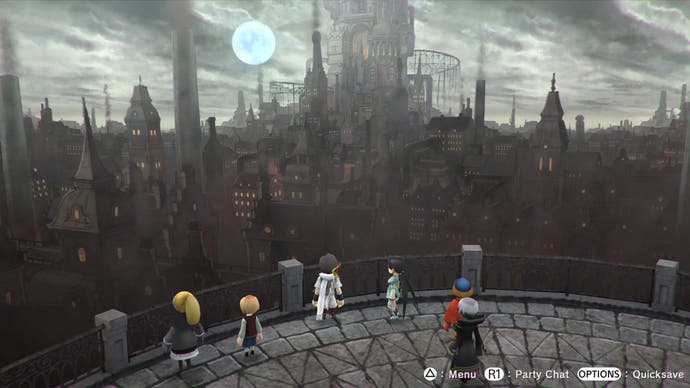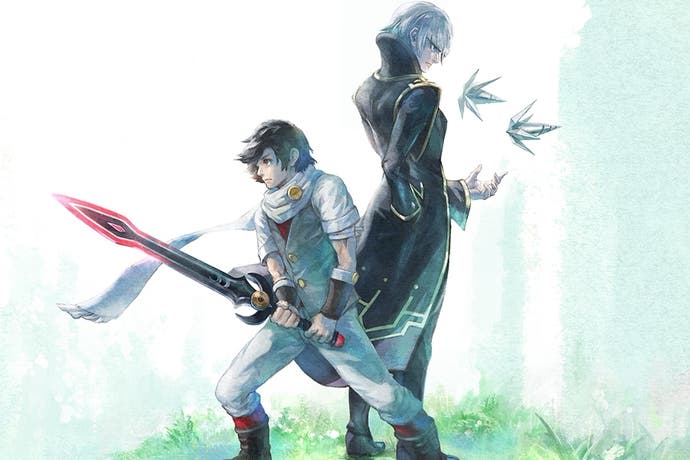Lost Sphear review
Error: asset_unknown.
In most video games we play the role of restorer. The world we enter is broken in some way, and we must piece it together again. In Chrono Trigger, perhaps the greatest of all the 16-bit era Japanese RPGs, this work is carried out along generational lines. A town mayor ruins the lives of his townspeople through greed and avarice. Travel back in time, locate one of his ancestral mothers and offer her a life-changing gift and she vows to always bring up her children to promote kindness and generosity. Return to the future and you find the mayor is transformed into a philanthropist. Order is restored.
Lost Sphear, the second game from Tokyo RPG Factory, a Japanese team founded to make games that rekindle the spirit and scale of the Super Nintendo classics, has no such ingenuity, and abandons all metaphor. Here, parts of the world have literally dropped off the map: where there was once a town, a forest or a mountain, now there is nothing but a white void, as if the related Unity asset had been accidentally dropped into a hapless programmer's recycling bin. You play as Kanata, a "low born" orphan who, with the support of his friends - the affable Lumina, the optimistic Locke, the gruffly rude Van and, later, a few others - must put the world back together, by turning memories into tectonic jigsaw pieces that fill the gaps.
These memories must be collected with the usual sticky-fingered zeal of the JRPG protagonist (here, as in so many early examples of the genre, you freely plunder from any treasure chests left lying about unlocked in a townsperson's home, often while they look-on, unfussed), either looted from chests, collected from monsters or, in one of the game's stronger novelties, carefully carved from written lines of NPC dialogue. Collect the correct cocktail and the missing asset can be alchemised and restored, allowing you to enter the resurrected building, or to progress across a previously vanished section of the map.

While key assets can only be restored to their original form and function, certain spots can be rebuilt according to whim: you may choose to conjure a tower that restores your ability to see enemy hit points, or adds a map to the HUD. Or you may choose to set down a more practical sort of tower that increases your chance of landing a critical hit, or how often you can strike for a Momentum attack.
Lost Sphear's ingredients are familiar, and deliberately so. Character names are lifted from old Square games, while many of the costumes have been rustled up from old wardrobes (the imperial knight Galdra, one of the game's more interesting characters, snugly fits Cecil, from Final Fantasy 4's, angular get-up). You build an uneasy collaboration with the governing Empire, and, at a certain point in the drama, gain access to a ship, and, most interestingly, vulcosuits - bipedal robotic costumes drafted in from Final Fantasy 6's universe. The battle system, which is quick-paced, flexible and often exciting, is clearly based on Chrono Trigger's fine example.
Some of the game's ideas - and even the odd monster - are lifted directly from its predecessor, I am Setsuna. Characters can again equip Spritnite to unlock special moves, while attacks can be strengthened via Momentum Mode, where, if you hit the square button at the correct moment during an attack, you can apply additional damage to the target.
This is more than a patchwork of clichés, however. Tokyo RPG Factory add numerous threads of invention to the tapestry, which is themed autumnal to I Am Setsuna's everlasting winter. For example, cooking ingredients can be harvested from scores of sparkling objects on both the world map and in towns, and handed over to chefs who will duly make you a status-enhancing meal. Vulocsuits, when you at long last gain access to these widely rumoured add-ons, allow characters to team up for a variety of powerful attacks (although, frustratingly, they run on limited fuel, so should only be used in dire circumstances). Special moves can be customised - not only given custom names, but also paired with other Spritnite effects so that, when you correctly trigger a Momentum attack, you can, for example, also restore some health.

The success of Lost Sphear's predecessor, the icy, lean I Am Setsuna had has had a discernible effect here. The sparse piano instrumentation of the earlier game has blossomed into an orchestra. Inns, those stop-off points where characters rest the night to have their bodies restored, absent from the previous game, make their debut, and Lost Sphear' cities, especially the Imperial capital, are far larger than any seen in the first game. This is a game furnished with the ideas of, seemingly, a larger team, with a larger budget and this had had the effect of bloating what was, in I Am Setsuna, a leaner, more focused undertaking.
There is much backtracking and, while it's possible to fast-forward through the dialogue, the reams of exposition and chit-chat, even when read at high speed, have a wearying effect. This would be far easier to bear if Lost Sphear's plot has the same exhilarating range of Hironobu Sakaguchi and Yuji Horii's work in the 90s, but compared to even a formative Dragon Quest, Lost Sphear feels vanilla and, in its hairpin dramatic turns, sadly predictable.
The great irony is, of course, that is was precisely this combination of feature creep and narrative bloat that moved the JRPG away from the tight-focused joys of the Super Nintendo era and which, eventually, inspired the creation of Tokyo RPG Factory. The studio has shown competence at summoning the ambiance of the past; now it must show that it can learn its lessons too.

